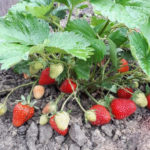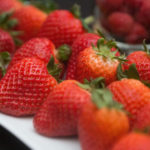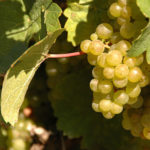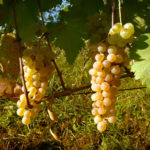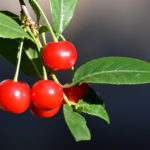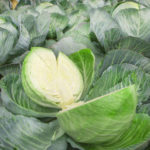Salsa strawberry variety
Salsa is a late-ripening non-repaired variety of garden strawberries (strawberries) for universal use. It was launched in the Netherlands in 1988 and is patented by Fresh Forward. It is appreciated for its high yield, unpretentiousness, good taste of berries and their excellent presentation. Our heroine cannot be called one of the favorites of the strawberry market, but she is very popular and deserves attention. Suitable for growing on a personal garden plot, as well as in small-scale farms. On an industrial scale, it is cultivated quite rarely, unable to compete with other late-ripening commercial varieties.

The plant is powerful, tall, erect, looks very compact. The mustache of the variety is powerful, formed in fairly large quantities. Leaves are light green in color. The flowers are bisexual, large, with large anthers. Peduncles with pubescence, strong, located at the level of leaves or higher, under the weight of the crop are laid on the ground.
The berries of Salsa are large and very large, correctly conical in shape with a neck, however, at the first harvest, the fruits are diverse - comb-shaped, rounded-oval and grooved can be observed. The skin is thin, bright red in color with shine. Achenes yellow, depressed rather deeply. The pulp of strawberries is light pink, moderately dense, fleshy, very juicy, with a moderately pronounced aroma. The variety has several characteristic features of the appearance of the fruit. First, there are whitish "shoulders" in the neck of the berry. Secondly, a rather wide zone without achenes is observed near the neck. Third, the sepal is slightly raised upward.
Salsa's taste is very good, even excellent; the tasters rated them 8 points on a nine-point scale. The pulp is sweet and sour with a predominance of sugar content, with a very pleasant texture. The gardeners appreciated the taste of our heroine rather ambiguously, but most of the opinions agree that the strawberries are tasty, but without "zest" - just ordinary strawberries without frills. The berries are versatile in use, very good fresh, perfect for processing and freezing. The fruits are suitable for transportation over short distances, are poorly stored, which is why, by the way, our heroine does not look particularly attractive against the background of other commercial varieties. Due to the insufficiently dense pulp and deeply sunk achenes, the berries during transportation can deform and release juice, losing their presentation.
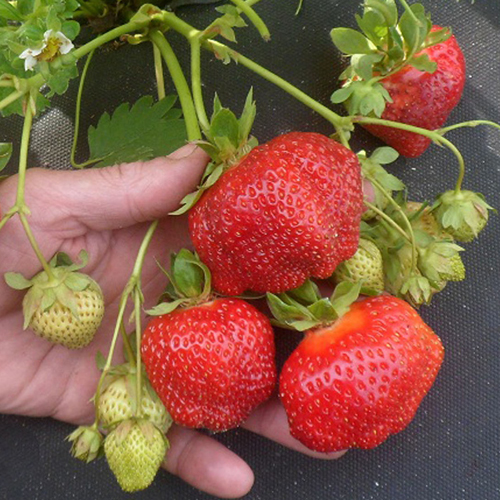
The average weight of fruits in the season is 25-35 grams, at the first harvest, strawberries are larger, some specimens can reach 50 grams or more. Compared to the generally accepted standard of the strawberry market, Elsantha, the berries of our heroine are 30-40% larger, and the share of marketable fruits is 20% higher, and a higher percentage of large specimens is also noted. Salsa has a high yield - about 1 kg of berries per bush. Moreover, such indicators are quite achievable with moderate agricultural technology and minor mistakes in care. By creating ideal growing conditions, strawberries can show more results. According to the originator, in terms of yield, our heroine surpasses Sonata and comparable to Florence... Also, the patentee notes that the berries are easy to visually detect on the bush, which makes picking easier and faster.
The variety ripens late, around early to mid-July. Depending on the region of cultivation, it can begin to bear fruit both earlier and later. In its homeland, Salsa ripens 7-10 days later than Elsanta, roughly on a par with Florence and a little later than Polka. Our heroine is perfect for extending the berry turnover, when the early and mid-season varieties have already given up most of their harvest. But it is worth saying that in our country this strawberry has not gained very much popularity among farmers, and Florence, like her, is more widely known.
The plant is highly resistant to powdery mildew, verticillary wilting, moderately susceptible to late blight, but very vulnerable to gray rot. Thus, it is imperative to pay attention to timely preventive treatments. The winter hardiness of the variety is good, but it is better to take care of the shelter. In northern regions with very cold winters, freezing of plants is possible, therefore, covering materials are extremely necessary in such areas. The same can be said about the frost resistance of strawberries; in case of severe spring frosts, it can be seriously affected. Heat resistance and drought resistance in Salsa are also relative, in very hot seasons, lunges can be observed, and a long lack of moisture leads to a decrease in yield.
In general, our heroine is quite dependent on climatic conditions. In hot dry periods, a decrease in the size of berries is observed, their flesh becomes softer, and besides, the fruits can be baked in the sun. On the other hand, there is also a pleasant moment - in such conditions, strawberries become sweeter. In rainy and cold seasons, the sugar content of the berries decreases, and the risk of damage to the fruit by gray rot increases.
Salsa is quite undemanding to soils, but it will show its best taste on acidic soils with a pH of 5 - 5.5. It can also be grown on nutrient-poor soils, but in this case a good return can be obtained only with timely fertilization in sufficient quantities. By the way, about dressing. Lack of nutrition, and especially mineral elements, negatively affects the taste of the fruit, and the very productivity of plants. This is not to say that these strawberries require excessively abundant regular feeding, but still they will perfectly respond to all your efforts. The variety can be attributed to the intensive type, so a simple rule works in caring for it - the better you take care of it, the more it will thank you.
Another agrotechnical nuance - Salsa reacts very negatively to waterlogging. Also, thickening is bad for plants, so it is advisable to plant bushes at a distance of at least 40 cm from each other. And don't forget to update landings in a timely manner. The period of use of plants varies depending on the intensity of cultivation; with moderate agricultural technology, they can consistently bear fruit well for about 3-4 years. With active use, strawberries quickly deplete their entire resource, so you may need to update the planting material in 2 years, and sometimes in a year.
What can be said at the end. Salsa is a very good variety worthy of attention with excellent characteristics. In many of its qualities, it is not inferior to the favorites of the strawberry market, therefore it is very attractive for small-volume commercial cultivation and cultivation in garden plots. This variety may not have any outstanding characteristics, but it is very reliable and stable and will never leave you without a crop.
